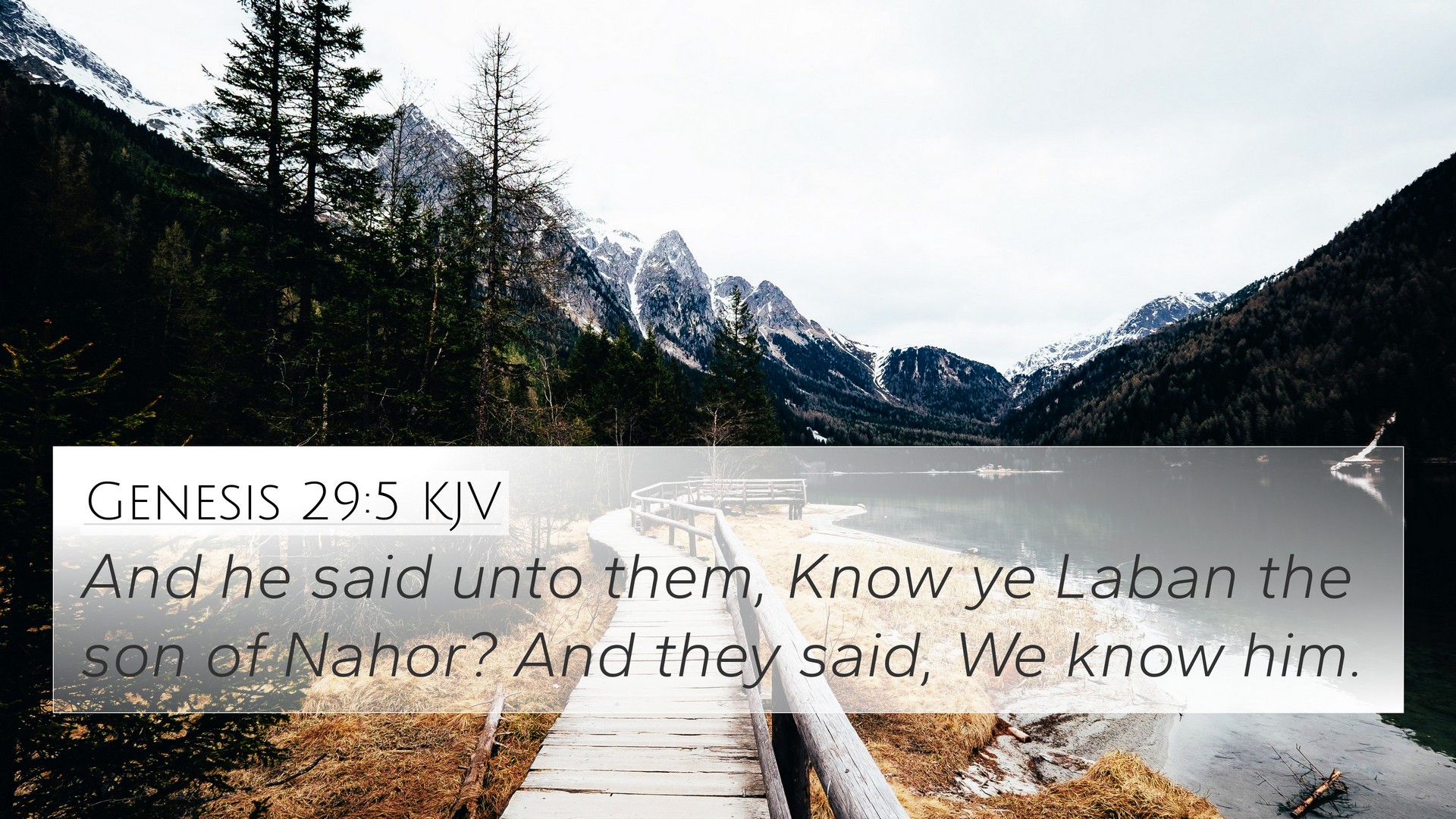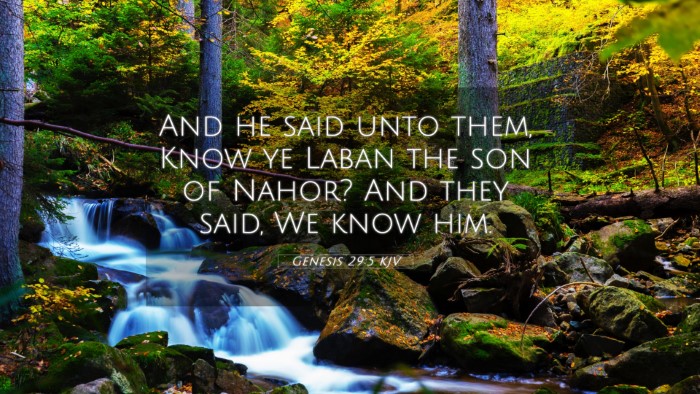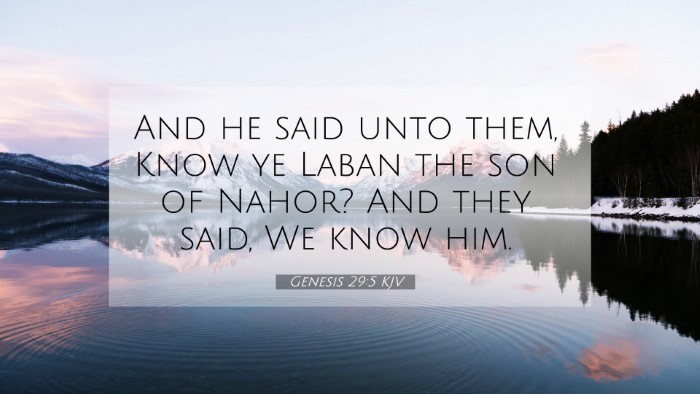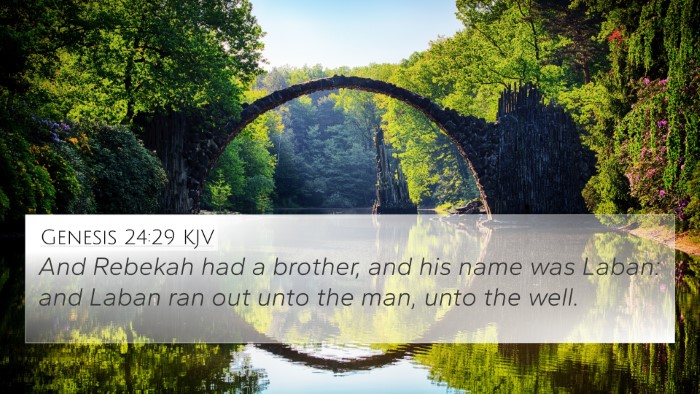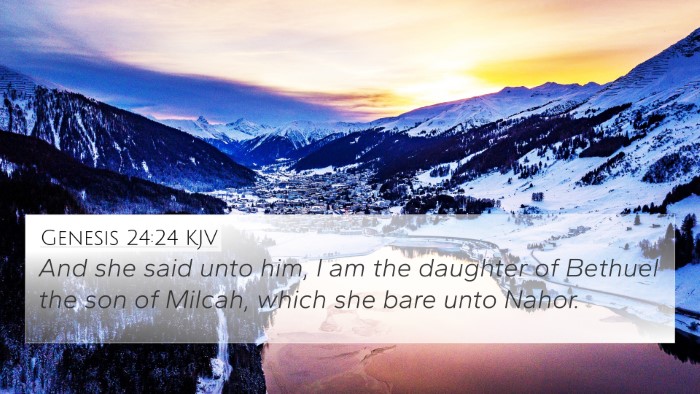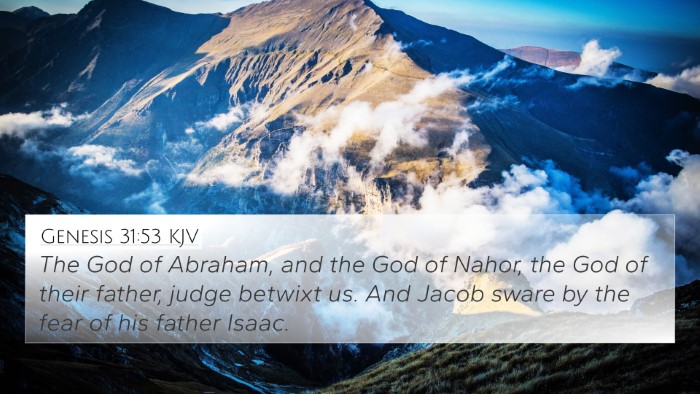Understanding Genesis 29:5
Bible Verse: Genesis 29:5 - "And he said unto them, Know ye Laban the son of Nahor? And they said, We know him."
Summary of Insights
This verse occurs in the context of Jacob's journey to find a wife among his relatives. Upon encountering shepherds, Jacob inquires whether they know Laban, which reflects not only his personal quest but also serves to establish connections within his family lineage and highlights the importance of kinship in the ancient Near Eastern culture.
Meaning and Context
The significance of this interaction is underscored by several key themes:
- Genealogical Importance: The lineage and heritage in the Bible are crucial. Jacob's reference to Laban shows a deep concern for familial connections and heritage.
- Divine Providence: This meeting is not merely coincidental; it illustrates God's guiding hand in Jacob's journey as he seeks a spouse.
- Cultural Practices: The importance of knowing one’s relatives is emphasized here, intertwined with themes of familial duty and honor, prevalent throughout the biblical narrative.
Cross-References
When exploring the connections between Bible verses, Genesis 29:5 relates to several key texts:
- Genesis 24:4: Abraham's instruction to find a wife for Isaac from his own family.
- Ruth 2:1: The kinship theme is echoed here concerning Boaz, whose connection to Ruth plays a crucial role in the narrative.
- Genesis 28:2: Jacob’s father's directive to marry from his own kin, reinforcing the idea of family ties.
- Genesis 29:16: Laban's connection to both Jacob and Rachel, providing continuity in the familial narrative.
- Exodus 6:23: Jacab’s descendants are further acknowledged, continuing the theme of lineage.
- Matthew 1:2-16: The New Testament genealogy refers back to these very same families, linking Old Testament and New Testament narratives.
- 1 Chronicles 2:1-2: Another genealogical connection that emphasizes the importance of family in Israel’s history.
- Genesis 12:1: God's call to Abraham illustrates the significance of familial obedience and purpose.
- Philippians 3:4-6: Paul's discussion of his lineage reflects the same values regarding heritage and identity.
- Hebrews 7:14: References to Judah's lineage, which connects back to Jacob's family dynamics.
Tools for Cross-Referencing
For those wishing to delve deeper and explore connections between Bible verses, there are various tools available:
- Bible Concordance: A useful tool to locate related verses quickly.
- Bible Cross-reference Guide: Helps in systematic study of links between different texts.
- Bible Chain References: A way to follow thematic connections through a series of linked verses.
- Cross-reference Bible Study: Methods to aid in discovering inter-Biblical dialogue.
- Bible Reference Resources: Offer comprehensive insights into text relationships.
Conclusion
Genesis 29:5 is not just an isolated inquiry; it opens the door to numerous thematic connections and genealogical considerations that can enrich one’s understanding of the text. By employing cross-referencing tools, readers can flesh out the narrative's depth and discover interrelated scripture, fostering a more profound appreciation of the Biblical tapestry.
